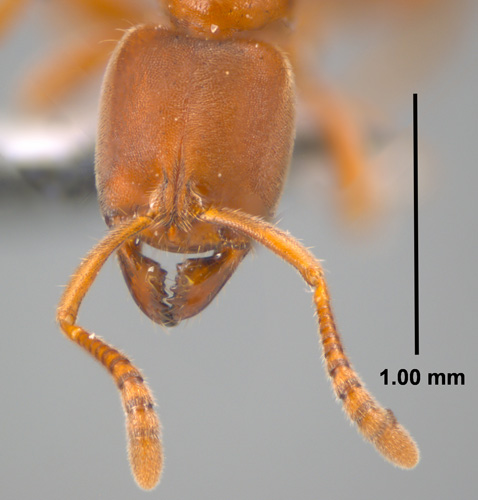|
Subfamily PONERINAE Tribe PONERINI Cryptopone gilva (Roger) |
Cryptopone gilva, frontal view of the head of a worker (click image to enlarge). |
Cryptopone gilva, side view of a worker (click image to enlarge). |
Introduction Cryptopone gilva have small colonies and can be found nesting in moist dead logs, stumps (especially pines), or in litter at the bases of trees. This is a fairly uncommon species and is most easily taken with soil and leaf samples. Identification Cryptopone gilva is very similar looking to Ponera and Hypoponera species, but can be readily distinguished from them by the two apical spurs found on the mid and hind legs and the oval pit (or depression) found at the base of the mandible. Both of those characters are hard to see and high magnification and good lighting are quite helpful. Distribution Literature Cited Brown, W.L.,Jr. 1963. Characters and synonymies among the genera of ants. Part 3. Some members of the tribe Ponerini. Breviora 190: 1-10. [30.ix.1963. Schmidt, C. 2013. Molecular phylogenetics of ponerine ants (Hymenoptera: Formicidae: Ponerinae). Zootaxa 3647 (2): 201-250. Mackay W.P. and E.E. Mackay. 2010. The systematics and biology of the New World ants of the genus Pachycondyla. Edwin Mellen Press. 642 p. |
Links |




